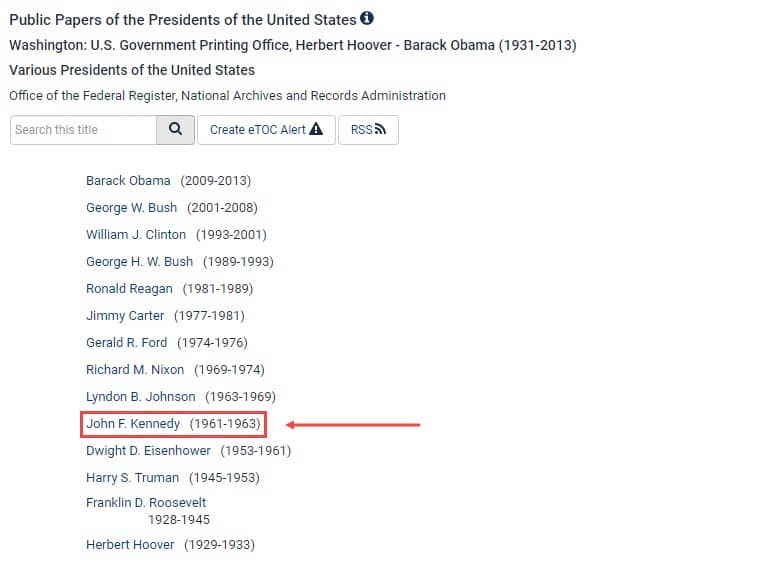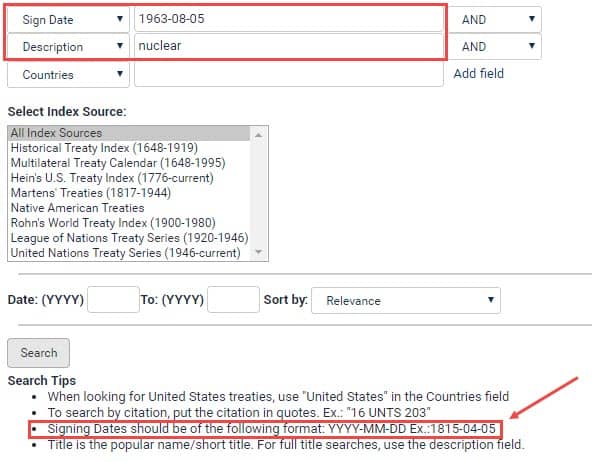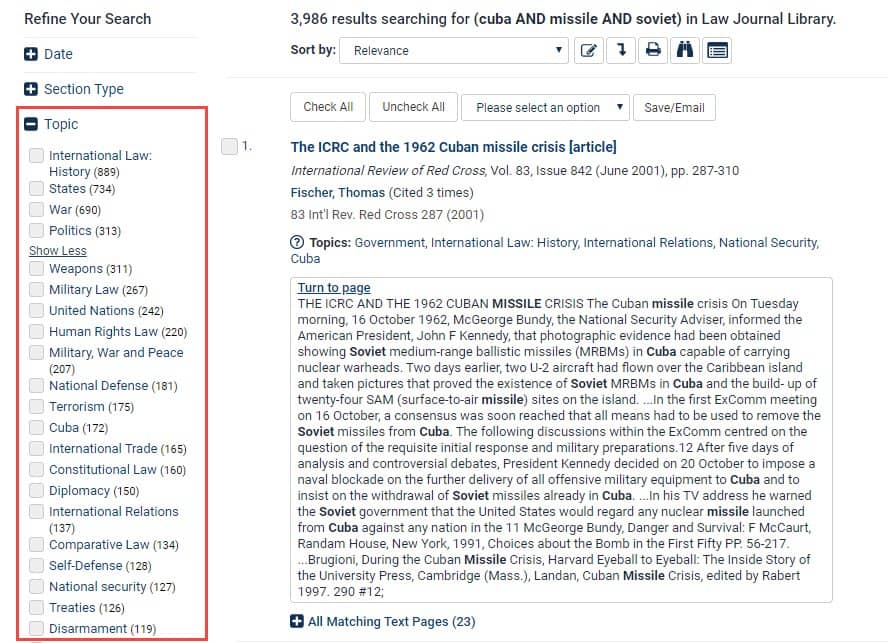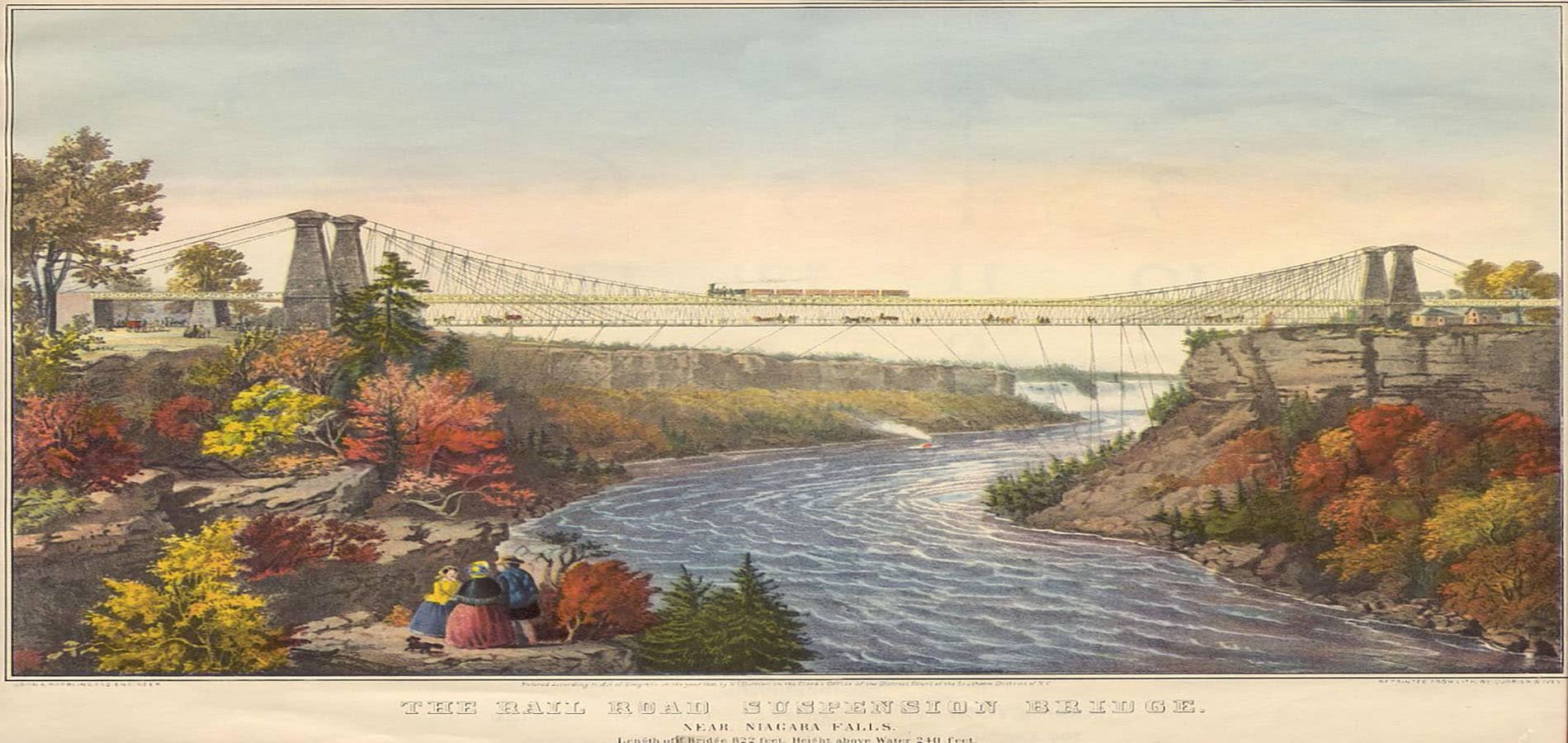More than 50 years ago, the discovery of Soviet missiles in Cuba led to a 13-day standoff between the United States and the Soviet Union. After spending 16 years in a Cold War, the Cuban Missile Crisis of 1962 remains the closest the two superpowers ever came to an all-out nuclear conflict. Tense negotiations and risky moves on the part of the Kennedy administration neutralized the conflict, but the terror incited by the crisis still shook the globe. Regardless, the Cold War continued on until its official end in 1991—though some argue it still exists today. Explore the events of the Cuban Missile Crisis and its legacy with HeinOnline.
Before We Get Started:
Don’t miss out! Make sure you have the databases we’ll be mentioning in this post. Follow the links below to start a trial today.
Overview of the Cuban Missile Crisis
In 1959, revolutionary Fidel Castro led a guerrilla army to unseat Cuban president Fulgencio Batista. Following a successful revolution, Castro himself took on the role of Cuban Prime Minister. As Castro’s new government became increasingly dictatorial, the United States feared that the nearby island would be vulnerable to communist influences. In an attempt to overthrow Castro’s regime and institute a non-communist government, the U.S. Central Intelligence Agency performed an unsuccessful invasion of the Cuban Bay of Pigs.
Over the two years following the Bay of Pigs debacle, Fidel Castro aligned with the Soviet Union to prevent further interference from the United States. However, since World War II, a state of “cold war” had existed between the Soviet Union and the United States. Post-war Soviet expansion, spread of communist ideals, and rapid arms development had led the U.S. to distrust the Soviets, fearful of a Russian world takeover. On October 14, 1962, in the midst of this Cold War, an American spy plane passing over Cuba photographed the assembly of a Soviet missile on the island, approximately 90 miles from the coast of Florida.
The discovery of Soviet missiles on Cuba plunged the two superpowers into the largest Cold War conflict to date. For two weeks after the discovery, the American public lived in fear of an impending nuclear war. Meanwhile, President John F. Kennedy and his administration searched for the least incendiary course of action. On October 22, Kennedy ordered the U.S. Navy to blockade the island and prevent Soviet delivery of additional missiles or military aid. In addition, Kennedy issued an ultimatum to the Soviets that the existing missiles be promptly removed.
Two days later, Soviet ships approached the naval blockade but did not attempt to breach the line of vessels. In the meantime, the Kennedy administration negotiated with Soviet leader Nikita Khrushchev for the removal of the missiles. In the end, Kennedy publicly promised not to invade Cuba for the removal of the missiles (while privately promising to withdraw U.S. missiles from Turkey).
The Cuban Missile Crisis ended on October 28, nearly two weeks after it began. Though short-lived, the crisis left its mark on U.S.-Russian relations forever. To prevent miscommunication in future similar situations, a hotline was installed between the White House and the Kremlin. Furthermore, the two superpowers signed a treaty prohibiting above-ground test detonations of nuclear weapons.
Continue on to explore the various avenues for researching the Cuban Missile Crisis in HeinOnline.
The Cuban Missile Crisis in HeinOnline
U.S. Presidential Library
Users can find President Kennedy’s official documents pertaining to the Cuban Missile Crisis in HeinOnline’s U.S. Presidential Library. After navigating to the database, select the tab entitled “Public Papers.” Choose the Public Papers of the Presidents of the United States collection and then select John F. Kennedy.

Select the 1962 volume to peruse its contents. Since the electronic table of contents is categorized by date, users may easily scroll to find Kennedy’s public papers from October 1962. Notable papers relating to the Cuban Missile Crisis include:
- “Radio and Television Report to the American People on the Soviet Arms Buildup in Cuba”
- “Proclamation 3504: Interdiction of the Delivery of Offensive Weapons to Cuba”
- “White House Statement on the Soviet Missile Sites in Cuba”
- “White House Statement on Soviet Proposals Relating to International Security”
- “Message to Chairman Khrushchev Calling for Removal of Soviet Missiles from Cuba”
- “Message in Reply to a Broadcast by Chairman Khrushchev on the Cuban Crisis”
- “Statement by the President Following the Soviet Decision to Withdraw Missiles from Cuba”
U.S. Congressional Documents
To find congressional material relating to the Cuban Missile Crisis, navigate to HeinOnline’s U.S. Congressional Documents database. Perform an advanced search within the database as shown below to yield more than 20,000 results. Relevant results include Congressional Record entries as well as congressional hearings regarding the crisis, such as this hearing on the Nuclear Test Ban Treaty resulting from the standoff.

Refine the search by using the facets on the left of the results page. For example, limit the date range to “1960 to 1969” for a more manageable 3,590 results.
World Treaty Library
Find the Nuclear Test Ban Treaty itself in HeinOnline’s World Treaty Library. Search for the treaty within the Treaty Index incorporated into the database. In the example below, we’ve used the sign date in its proper searchable format as well as a single keyword description to quickly and efficiently find the treaty in question.

Users will see that the treaty, number 480 UNTS 43, is the first result.
Law Journal Library
Discover scholarly work on the Cuban Missile Crisis and its impact with HeinOnline’s Law Journal Library. Perform a full-text search in the main search bar for cuba AND missile AND soviet to yield nearly 4,000 results. Select the “Topics” facet on the left-hand side of the results to refine the search by any of HeinOnline’s related machine-learned topics.

Relevant results include:
- The Cuban Missile Crisis: An Analysis of Soviet Calculations and Behavior
- Cuban Missile Crisis: How Thirteen Days Changed the World
- The Relevance of International Law for Foreign Policy Decision-Making When National Security Is at Stake: Lessons from the Cuban Missile Crisis
- When the World Hung by a Thread
- Nuclear Weapons and International Law: The Arms Control Dimension
Loving these results? Learn how to share them with a friend or colleague.
Did You Enjoy This Post?
Like what you see? Check out some of our similar works below:
- A Columbus Day Exploration of Indigenous American History
- The Nuremberg Trials and Their Profound Impact on International Law
- Secrets of the Serial Set: The Pacific Theater of World War II
- Building America: The Powerful Story Behind “We the People”
- Remembering the Fallen: Researching the Tragedy of 9/11
Don’t miss out! Hit Subscribe to have blogs like these sent directly to your inbox.



